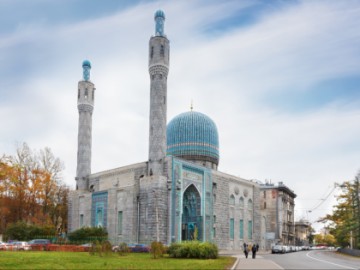The Peter and Paul Fortress: A Prison and Imperial Family Vault
The Peter and Paul Fortress and St. Petersburg are the same age: its laying date is considered the birthday of the northern capital. The fortress of earth and wood, created to the drawings of Peter the Great, was founded after the victory in the Northern War to protect the conquered lands. The construction suffered during a flood, and in 1706 it was rebuilt in stone. The stone fortress followed the shape of the island it stood on, in the form of an elongated hexagon. There were pentagonal bastions at its corners, each equipped with 60 cannons. Up to now, a cannon fires from the Naryshkin Bastion every day at noon.
The Peter and Paul Fortress had never fulfilled its martial purpose and quickly became a political prison for the tsarist undesirables. The leaders of the Decembrist Revolt were executed on the earth rampart of the fortress. A prison museum, arranged in the Trubetskoy Bastion, is reminiscent of the Peter and Paul Fortress as a place of imprisonment. Worth exploring in the territory of the fortress are the Mint, where all the Russian coins were minted until the end of the last century, and the Boat House, the former "garage" for the small boat of Peter the Great.
The Peter and Paul Cathedral, founded concurrently with the stone structure of the fortress, is the tallest building in the city: its height is 122.5 meters. A 40-meter spire, decorated with a figure of a flying angel, is plated with 8 kg of gold. The interior of the temple is also impressive: a carved iconostasis in the form of a triumphal arch, a gilded pulpit and a place for the tsar with a golden crown, upholstered in velvet. The cathedral is notable for a remarkable number of bells – as many as 103! Peter the Great conceived this temple as an imperial family vault: all the Romanovs, with the exception of Peter II and Ivan VI, lie here and in the Grand Ducal Burial Vault, built nearby.






































